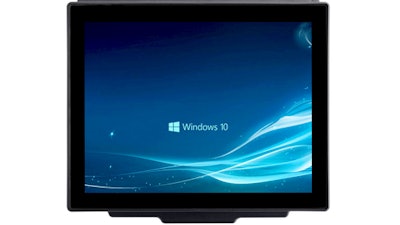
Today, we have come to expect 24/7 connectivity, and when we can’t get a network signal, we get frustrated. In a demanding environment like a warehouse, a bad connection isn’t just a source of frustration; it impacts efficiency.
Here are a few tips on how to make sure your network is up to the job.
Dealing with a changing environment
A warehouse is a dynamic environment, where stock levels fluctuate and goods change with the seasons, both of which can affect your network performance. Plus, your stock is made of different materials that can affect the signal. For example, metal reflects it while liquids absorb it. Then if you stack goods right up to the rafters, you may create dead zones with absolutely zero signal.
To mitigate this problem, implement a self-healing network where the access points (APs) monitor what’s going on and change accordingly to ensure signal strength and provide constant connectivity.
Placement of access points and access point antennas
Placement of APs is another consideration, both inside and out. As cargo comes in, sometimes it’s stacked several stories high. To make sure these piles of goods don’t interrupt the coverage, you need APs that can throw signals a long way. In a yard or exterior space, you could use a cellular network, but if you use WIFI you can’t guarantee the signal will be strong enough to ensure full coverage. On top of this, poor antenna placement means you lose connectivity as your forklifts go in and out of trucks.
Sometimes it’s not the APs nor signal strength that’s the issue, but your devices. In a warehouse environment there’s dust, things get dropped, it can be cold, so you need devices that are fit for purpose. You need rugged devices. As well as being built for the demands of the job and the environment, they bring other benefits.
Two antennas are better than one
Semi-rugged or consumer grade tablets and handhelds often come with a single antenna, which works adequately in some settings. However, rugged devices featuring two antennas can really speed things up. When you need to send and receive large amounts of data you don’t want to be waiting for your device to catch up. Two antennas increase response times so operators can move about, completing their tasks seamlessly.
Dual antennas with multiple-input and multiple-output (MIMO) technology can even take advantage of reflected signals, which traditionally slow single antenna devices down, thereby further speeding up network traffic, as well as enhancing roaming capability between access points.
Mixing the old and the new
Ideally, you will update both your network and devices at the same time to make sure they work together. However, in reality this rarely happens. Trying to connect newer devices to an old network or vice-versa can throw up connectivity challenges.
If you get new devices, you generally decide to connect one and see what happens. Kind of like dipping your toe in the water. You hit a few complications but manage to sort them out and decide to hang the rest. Despite having the latest software, drivers, and apps you suddenly get a lot of issues. In these cases, it’s really important to have someone knowledgeable involved and ideally, someone from your IT or network team too. Working together makes it easier to understand how the network was designed, solve the problem, and get everything operating at the best possible level.
Uncovering the issues
One thing you can do to make sure your network is up to scratch is to get a survey. Using listening devices, you can create a map of coverage and noise levels in the 2.4 GHz and 5 GHz bands. However, this gives a static picture based on a specific time and day.
A multi-window survey goes a step further and is carried out on several days at different times to reflect the changing environment of a warehouse. Surveying is great for revealing noise, saturation, and coverage. Be aware though that surveys are just snapshots in time and will not reveal traffic issues beyond the scope of the survey.
For example, on a self-healing network the levels are constantly changing and in some cases it’s an access point that has issues. If somebody heads in one direction it works fine, but if you approach it from the opposite direction, it doesn’t work. In that case it’s not that particular AP that’s the problem, it’s the one before that’s not allowing the device to roam. So, you need to dig a bit deeper and look at the individual access points and their logs to find the source of the problem.




















